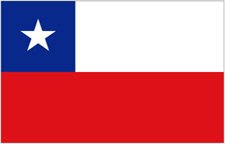I'm on the Board of NANPA - the North American Nature Photography Association. It was founded by Roger Tory Peterson and others including Franz Lanting, Galen Rowell, Art Wolfe, etc.
Ethics is always a hot topic. The position NANPA has taken is that disclosure is important, but only owl baiting is strictly prohibited. Other subjects have a lot of gray area and there is limited real research on the subject. For example, there was a proposal to prohibit baiting bears for photography in Minnesota, but baiting is allowed by hunters so that did not go very far.
The idea of disclosure is expanding into several different levels for control. At one extreme you have "captive" subjects - animals in a zoo. But you may have subjects that are captured temporarily for a photo, and they are described as "controlled". You also have free and wild subjects in a natural habitat.
Food and bait have a range of possible disclosures. Bird feeders are not considered to be a problem if they are normally used to provide food whether or not a photo is being made. But birds at feeders or eating obviously commercial food (mealworms, hulled sunflowers, suet, etc.) can be less desirable and have a lower degree of effort. Fish & Wildlife in the US made a determination that locally caught bait fish were fine, but bait fish from other areas was artificial attraction - even if the fish were frozen in both cases. But in both cases, the food would be considered baiting. Owl baiting is specifically singled out because of abuse as being unethical.
Some photographers are beginning to use keywords to designate free, wild, unbaited subjects. Some companies are beginning to require specific disclosure for images they use in advertising. In general though, the stock industry is largely indifferent to ethical considerations.
Game farms are another problem area. That's probably the hot topic today. There are some photographers that are strongly opposed to the existence of game farms, and are militant in their opposition. There are others that see game farms that are professionally operated provide a good way to support animals that cannot be released to the wild, and may never have lived in the wild. Nature centers often receive authorization to maintain captive wild subjects because of the educational value.
Individual contests are all over the map. Many contests have categories for zoo animals or simply require disclosure. Other contests require wild, unbaited subjects only.
One final comment. There are different perspectives. Ethical standards are shifting. Photographers like Tom Mangleson built their reputation on images that were often of captive and controlled subjects. But today, those images are still being sold, but he is one of the biggest supporters of ethical photography. You can't weight every article and opinion as fact or policy - in many cases statements in nature publications are part of an effort to influence policy. I've seen some of the biggest debates involving birders and birding photography. Often "researchers" have no limits on handling or capturing subjects in spite of the inevitable injuries, but photographers are held to a tight standard and subject to penalties. If a birder spooks a subject, it was a mistake, but if a photographer gets to close and spooks a subject, they are unethical. National parks and public lands often have very tight standards for photographers because of the potential for abuse and because the general public often lacks good judgement.
Thus - NANPA's policy is simply to promote disclosure of the relevant conditions around a photo that might spark a question about ethics.

www.nanpa.org




